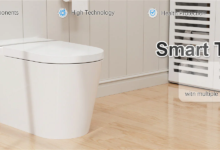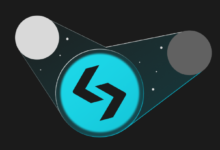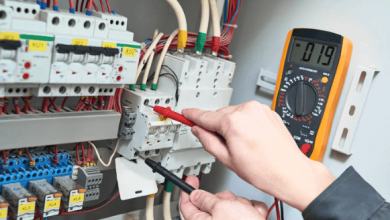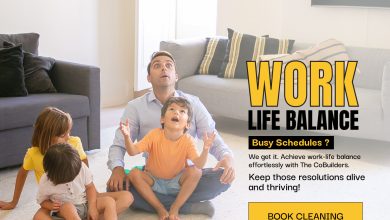The Ultimate Guide to Buying a Center Console Fishing Boat

Center console fishing boats have become one of the most popular choices for anglers and boating enthusiasts alike. Known for their versatility, ample deck space, and superior handling, these boats are designed to meet the needs of fishermen who require both functionality and performance. Whether you’re heading offshore for deep-sea fishing or staying inshore to catch local gamefish, a center console boat provides a reliable and enjoyable experience. However, purchasing a center console fishing boat requires careful consideration of several factors.
In this ultimate guide, we’ll break down everything you need to know about buying a center console fishing boat, from understanding the key features to choosing the right size and engine power for your needs.
1. What is a Center Console Fishing Boat?
A center console fishing boat is characterized by its unique layout, where the helm (steering and control station) is located in the middle of the boat. This central console design provides 360-degree access around the boat, making it ideal for anglers who need space to move around while casting lines, fighting fish, or handling gear. Unlike cabin boats, center console boats offer an open deck, which maximizes usable space.
These boats are popular for both inshore and offshore fishing, as they combine the agility needed for shallow waters with the durability and power to withstand rougher seas. Center console boats typically range in size from 18 to over 40 feet, making them suitable for various types of fishing excursions and personal preferences.
2. Determine Your Fishing Needs and Style
Before you start shopping for a center console fishing boat, it’s essential to determine your specific needs and fishing style. This will help you narrow down your options and ensure you select a boat that perfectly suits your requirements.
Some key questions to ask yourself include:
- Where will you be fishing? Will you be primarily fishing inshore (rivers, lakes, and coastal areas), offshore (deep-sea fishing), or both?
- How often do you fish? Are you a weekend angler, or do you plan to fish frequently throughout the year?
- How many people will be on board? Consider the typical number of passengers, including friends, family, or fishing partners.
- What species of fish do you target? Different types of fishing, such as trolling, bottom fishing, or fly fishing, may require different features or equipment.
By identifying your specific fishing style, you can better evaluate the features and layout of a center console boat that will work best for you.
3. Size Matters: Choosing the Right Size for Your Boat
Center console fishing boats come in a wide range of sizes, and the size you choose will largely depend on your fishing environment and how you plan to use the boat. Below is a general guide to help you choose the right size:
- 18-24 feet: These smaller center console boats are ideal for inshore and nearshore fishing. They’re easy to trailer, maneuver, and store, making them a great choice for casual anglers or those with limited storage space. However, they may not perform as well in rough offshore conditions.
- 25-30 feet: Boats in this size range are versatile and can handle both inshore and offshore fishing. They offer more stability in open waters and can accommodate more passengers and gear. They’re a great middle-ground choice for anglers who want flexibility.
- 30-40 feet: Larger center console boats are perfect for serious offshore anglers. These boats provide enhanced comfort, more storage, and the ability to handle rougher seas. They often come equipped with powerful engines, livewells, and advanced navigation systems.
- 40+ feet: These are top-tier center console fishing boats designed for long offshore trips and rough waters. With luxurious features, advanced technology, and ample space for multiple passengers, these boats are suitable for professional anglers and boating enthusiasts looking for the best in performance.
Choosing the right size depends on how and where you plan to fish. If you’re sticking to inshore fishing and day trips, a smaller boat may suffice. If you’re venturing offshore and require more power and stability, a larger model may be more appropriate.
4. Key Features to Look for in a Center Console Fishing Boat
When shopping for a center console fishing boat, it’s crucial to look for features that enhance your fishing experience. Here are some must-have features to consider:
- Livewells: Livewells are essential for keeping bait and catch fresh throughout the day. Many center console boats come with built-in livewells, but the size and location can vary. Ensure the boat has a livewell system that meets your fishing needs.
- Rod Holders: Proper rod storage is a must for any fishing trip. Look for boats with multiple rod holders, rocket launchers, and storage compartments to keep your rods organized and accessible.
- Fishboxes: A good fishbox will keep your catch fresh until you get back to shore. Insulated fishboxes with drainage are ideal for easy cleaning and long-lasting storage.
- T-tops or Hardtops: A T-top or hardtop provides essential shade and protection from the elements. Many boats offer this feature as standard or optional, and some even have built-in rod holders or radar systems attached to the top.
- Comfortable Seating: If you plan to spend long hours on the water, comfortable seating is essential. Many center console boats offer cushioned seating options with storage underneath for added convenience.
- Ample Storage: Fishing requires a lot of gear, so make sure the boat has plenty of storage for rods, tackle, safety equipment, and personal items.
- Electronics and Navigation: Look for center console boats equipped with fish finders, GPS systems, radar, and VHF radios. These electronic systems will make your fishing trips safer and more efficient.
5. Understanding Engine Power and Fuel Efficiency
The engine is the heart of your center console fishing boat, and choosing the right one is critical. Engine power will impact your boat’s speed, performance, and fuel efficiency.
- Outboard engines: Most center console fishing boats are powered by outboard engines, which are mounted on the stern of the boat. Outboards are ideal for fishing boats due to their high power-to-weight ratio and easy maintenance.
- Single vs. dual engines: Smaller boats typically have a single engine, while larger boats may feature twin or even triple outboard engines. More engines provide extra power, speed, and safety (if one engine fails), but they also increase fuel consumption and maintenance costs.
- Horsepower (HP): The horsepower of the engine should match the size and intended use of the boat. For example, a 200-300 HP engine may be sufficient for a 24-foot boat, but a larger boat used for offshore fishing may require 400-600 HP or more.
Fuel efficiency is another important consideration, especially for anglers who plan to spend long days on the water. Larger, more powerful engines tend to consume more fuel, but modern outboard engines are designed with fuel efficiency in mind.
6. New vs. Used Center Console Boats: Which is Right for You?
One of the major decisions when buying a center console fishing boat is whether to buy new or used. Each option has its own set of advantages and drawbacks:
- New boats: When you buy new, you get the latest technology, modern features, and a warranty. New boats are often more reliable and require less maintenance in the beginning, but they come with a higher price tag.
- Used boats: Buying used can save you a significant amount of money, but it’s important to carefully inspect the boat for wear and tear. Many reputable dealers offer certified pre-owned boats that come with warranties and have been thoroughly inspected.
If you’re new to boating, buying a new center console may give you peace of mind with fewer initial repairs. However, if you’re on a budget or experienced with boat maintenance, a used boat might offer great value.
7. Financing Your Center Console Fishing Boat
Buying a center console fishing boat is a significant investment, and most buyers will need to consider financing options. Many dealerships offer boat financing through partner lenders, and you can also explore financing options through your bank or credit union.
When evaluating financing options, consider:
- Loan terms: Boat loans typically range from 5 to 20 years. Shorter loan terms will result in higher monthly payments but less overall interest.
- Interest rates: Your interest rate will depend on factors such as your credit score, the loan amount, and the lender. Compare rates from multiple lenders to get the best deal.
- Down payment: Most lenders require a down payment of 10-20% of the boat’s purchase price.
It’s important to fully understand the terms of your loan and make sure the monthly payments fit within your budget.
8. Test Drive Before You Buy
Just like buying a car, you should always test drive a center console fishing boat before finalizing your purchase. A sea trial will give you an opportunity to assess the boat’s handling, comfort, and performance on the water.
During the test drive, pay attention to:
- Handling and maneuverability: Does the boat handle well in different conditions, such as choppy waters or tight turns?
- Acceleration and speed: Does the boat accelerate smoothly, and does it reach your desired top speed?
- Comfort and noise levels: Is the boat quiet and comfortable at cruising speeds, or is it loud and rough?
A test drive is a crucial step in the buying process to ensure the boat meets your expectations.
Conclusion
Buying a center console fishing boat is a significant investment, but with careful consideration and planning, you can find the perfect boat to meet your needs. By determining your fishing style, choosing the right size, evaluating key features, and understanding engine power, you can make an informed decision.







